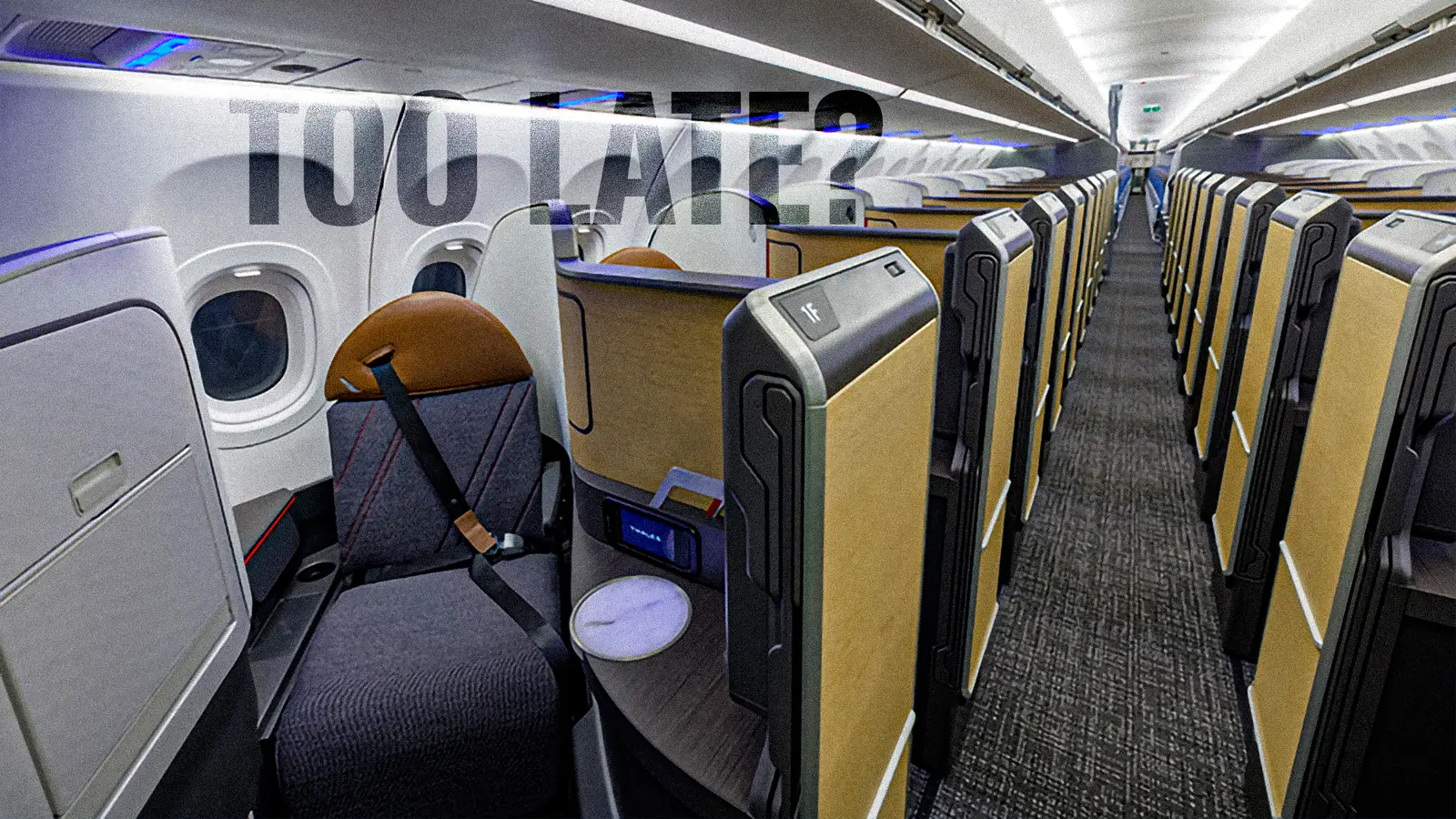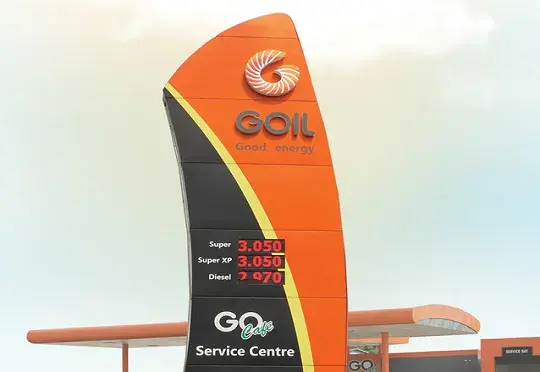Copyright Simple Flying

Aviation industry analysts are currently struggling to identify a key facet of American Airlines' business model. The legacy carrier operates flights to destinations worldwide, utilizing major gateway hubs such as Dallas/Fort Worth International Airport (DFW) and Miami International Airport (MIA). In the years following the COVID-19 pandemic, the largest amount of revenue growth within the commercial aviation industry has been attributed to premium cabins, where business travelers have continued to pay higher premiums for the comfort that these cabins provide. Furthermore, there has also been a rise in high-spending leisure travelers who are also willing to pay for an upgrade. American Airlines is significantly behind its competitors in terms of growth in the premium market, which is part of the reason why the airline's growth has lagged behind that of United Airlines and Delta Air Lines, its two principal competitors. United Airlines operates a global network that emphasizes connecting high-volume business travel hubs, and its iconic Polaris business class has become a favorite of high spenders. Delta has an even larger head start, with the airline cornering the premium travel market through lucrative partnerships with American Express and the credit card company's loyalty network. We analyze American's position within the premium market and evaluate if the carrier has any hope of catching up to its major competitors. A Brief Overview Of American Airlines And Its Business Model American Airlines operates a scale-driven hub-and-spoke network centered on Dallas/Fort Worth International Airport (DFW), Charlotte Douglas International Airport (CLT), Miami International Airport (MIA), and a number of other major hubs all across the United States. The airline operates tight arrival-and-departure banks that maximize overall connections and raise load factors, all while supporting pricing on core passenger flows. The airline's overall revenue mix includes main-cabin fares, premium upsell, and sizable ancillary fees, including bags, seats, and change differentials. AAdvantage is the airline's profit engine, and co-branded credit card partnerships and mileage sales deliver exceptionally high-margin cash flow. Stimulating overall loyalty and enabling targeted price discrimination through status and dynamic awards is a key part of the airline's operational strategy. American's fleet strategy emphasizes common, fuel-efficient aircraft types, including the Airbus A321neo and the Boeing 737 MAX on domestic services and the Boeing 787 for long-haul routes. This lowered overall unit costs and simplified maintenance and training. The airline operates high-density domestic layouts that feature a larger overall average gauge on trunk and leisure routes. Costs are dominated by unionized labor, fuel, and airport constraints. Overall productivity initiatives, including tighter turns and tech-enabled planning, also aim to offset volatility. Here are some statistics for the fleets of American Airlines and its two principal competitors, according to fleet data made available to Simple Flying by ch-aviation: From a strategic perspective, American Airlines leans on overall schedule breadth in business corridors, including its oneworld partnerships and joint ventures that support further expansion of the airline's global reach. This includes further building out its Miami-anchored lead in the Latin American market. The overall playbook allows for the airline to defend yields with network depth and loyalty while harvesting ancillary revenues and improving credit card economics in order to smooth overall cycles. What Are American's Offerings In The Premium Market? American Airlines targets premium demand through a layered offering that spans across multiple kinds of cabins, ground experiences, and headline loyalty benefits. Long-haul Flagship Business products are the centerpiece of this model. This cabin offers lie-flat seats with direct aisle access. This also helps upgrade dining and wine service, alongside premium bedding, amenity kits, and fast, gate-to-gate Wi-Fi. A new generation of suites is rolling in and is also adding more privacy and storage. Premium Economy is a cabin which sits between business class and the main cabin, while offering wider seats, more pitch and recline, and enhanced meal services. These passengers are also offered an elevated baggage allowance, one that offers comfort for leisure travelers and cost-conscious corporate travelers. In the domestic market, first class provides larger recliners, priority check-in and boarding, as well as complimentary drinks and meals on longer flights, as well as select transcontinental routes that feature lie-flat business class seats that offer lounge access. On the ground, Admirals Clubs cover breadth, while Flagship Lounge locations in key gateways offer higher-end dining options, premium beverage options, and quieter workspaces. A concierge-style Five-Star Service adds personal escorts, prioritizes rebooking, and offers chauffeured connections for a fee. The airline's AAdvantage program ties all of this together. Elite tiers deliver complementary domestic upgrades, improved priority services, and upgrades across the airline's system that will move members into premium cabins. Dynamic awards and cash-plus-miles also provide flexibility for the carrier. This strategy is designed to use network breadth and lounges to anchor corporate relevance, while overall product differentiation and seamless loyalty benefits defend yields against full-service rivals and premium-leaning low-cost competitors across the board. How Is American Airlines Behind Its Key Competitors? American Airlines currently trails its two largest competitors, Delta Air Lines and United Airlines, in premium markets for a few structural reasons. For starters, American's strongest hubs skew more towards domestic markets rather than leisure or Latin American markets, while Delta Air Lines and United Airlines tend to over-index to corporate centers and long-haul business flows that support higher-paid-premium demand. Second is overall product consistency, as United Airlines recently finished a Polaris retrofit across its long-haul fleet, and Delta Air Lines has built a reliable identity around its Delta One product. American Airlines' recent removal of its Flagship First cabin, alongside staggered business-class upgrades and slower uniformity, has diluted brand memory and overall willingness to pay. Third is overall ground experience. Delta's broad Sky Club footprint and United's Polaris Lounges set a clear premium arc from curb to cabin. American's Flagship Lounges are good but fewer, with Admirals Clubs positioned more as mass-premium instead of top-tier. Fourth, there was the noted New York setback. The unwinding of a potential alliance in the Northeast reduced American's overall corporate relevance at major hubs like John F. Kennedy International Airport (JFK) and LaGuardia Airport (LGA). The airline's operational narrative is also a piece of the puzzle. Delta remains the gold standard for reliability, while United's improving performance helps it close deals with corporate clients. American has yet to build this kind of identity. What Is American's Pathway Forward In The Premium Market? American Airlines' pathway forward in the premium market is centered on overall premium mix shift, product consistency, and network fit. The airline's management team aims to grow premium seats roughly twice as fast as the main cabin, with a materially larger amount of lie-flat seats adding to overall Premium Economy capacity on long-haul routes. These new Flagship Suites will be rolled out on Boeing 787-9 jets and then across legacy widebody aircraft through retrofit programs and eliminating cabin variability that depressed overall willingness to pay. The Airbus A321XLR brings true lie-flat capabilities to thinner transatlantic and deep Latin American routes, which adds to high-yield seat counts without oversizing aircraft. On the ground, there are refreshed Flagship suites and Admirals Clubs, in addition to selective new lounges that create a clearer curb-to-cabin arc. The AAdvantage program remains the overall monetization flywheel for the airline, enabling deeper corporate deals, richer upgrade instruments, and overall co-branded card growth that will target a higher pair-premium mix rather than more free upgrades. Execution priorities remain critical, and restoring corporate relevance in New York continues to be a key priority as the airline leans into Miami's leadership in the Latin American market. What Are American's Biggest Vulnerabilities In The Premium Market? American Airlines' vulnerabilities in the premium market are clustered around ground experience, execution, and product. The airline's hub mix is tilted towards the domestic and leisure mix, as well as services to Latin America. This yields fewer corporate-heavy long-haul flows than Delta and United and limits paid-premium depth. The airline's overall product inconsistency has diluted the willingness of some passengers to pay for premium seats, especially for products like the Flagship Suite and Premium Economy, which are yet to be standardized across the airline's entire fleet. On the ground, Flagship Lounge coverage is thinner, and Admirals Clubs tend to skew towards mass-premium services, ultimately dulling the curb-cabin arc when compared to Polaris Lounges or Delta Sky Clubs. Premium carriers are especially strong in the Northeast, and this is where Delta and United have the strongest perception that outshines American's brand. Timing remains a major risk for the carrier, as its ability to deploy modern ultra-long-haul aircraft depends heavily on delivery delays. Congestion at slot-constrained hubs across the airline's network is also proving a challenge. What Is The Bottom Line? American Airlines is a legacy carrier with a strong presence in the premium markets, but it does lag behind major competitors Delta and United. Part of this deficit cannot be blamed on the airline's management team, but rather on the airline's fundamentals and network infrastructure. However, there have been moves made by United and Delta, which have helped them get ahead and improve their brand image to the point that they can capture a massive amount of premium travelers. The same, however, cannot really be said for American Airlines. American Airlines, however, does have the runway in front of it when it comes to developing a stronghold in the premium market. The airline has pushed forward a number of growth initiatives that could allow it to catch up to its competitors.



